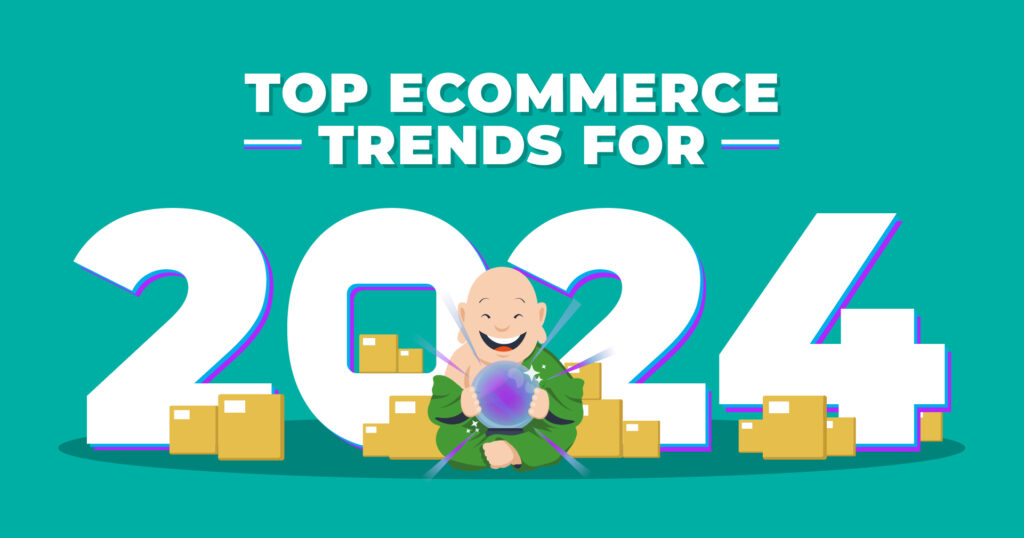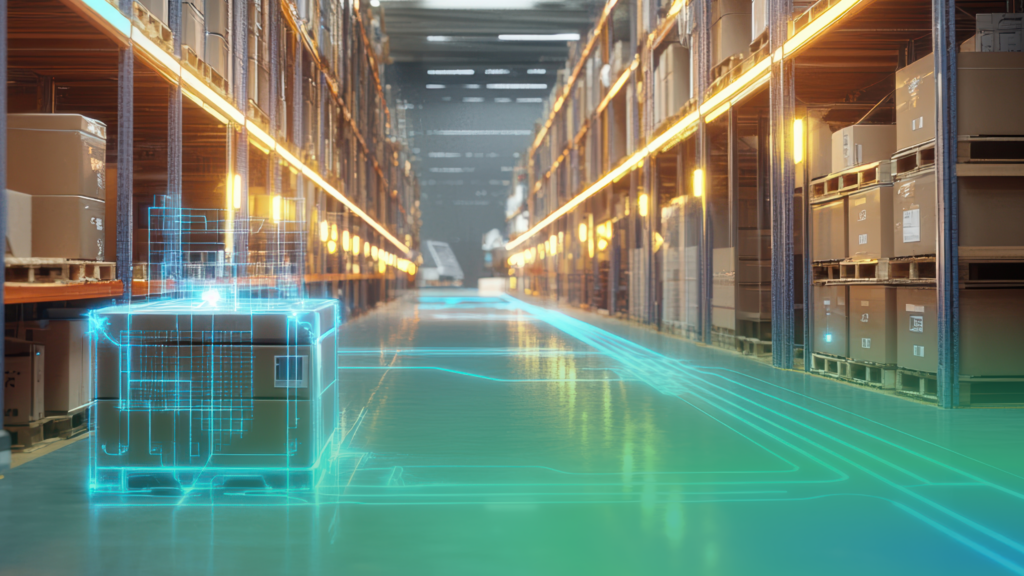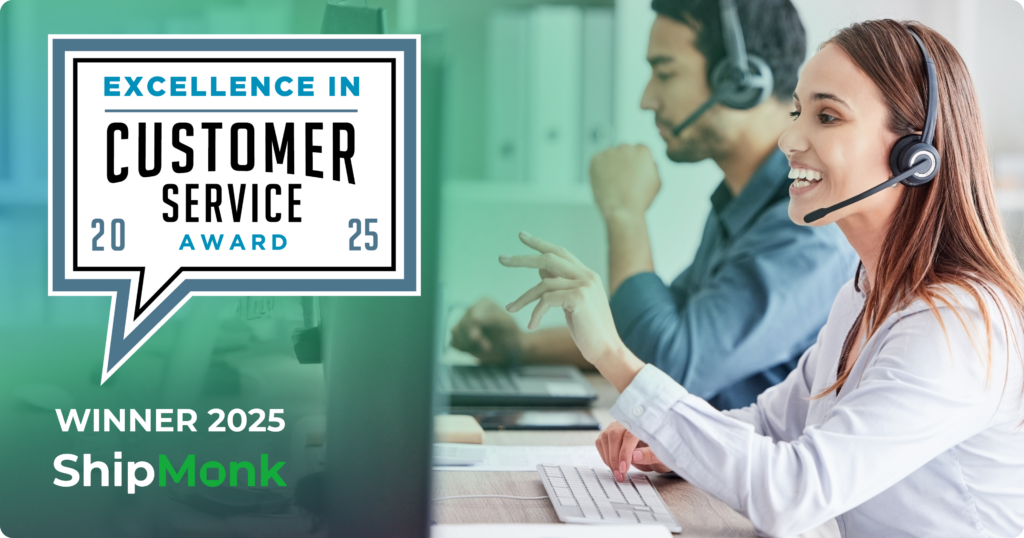We can’t predict when joggers will go out of style (never, we hope) but we are pretty good at predicting ecommerce trends. Since ShipMonk is a third-party logistics provider (3PL for short), we’re well situated to observe the ecommerce supply chain from end to end. After all, we work with entrepreneurs, ecommerce retailers and resellers to pick, pack and ship their merchandise directly to consumers (DTC) and to other businesses (B2B), such as marketplaces or retailers.
ShipMonk nurtures relationships and facilitates integrations with shipping companies, as well as providers of third-party tools and systems that enable ecommerce businesses to thrive. Furthermore, in order to anticipate the needs of our ecommerce clients, we have to keep our ears attuned to changes in technology, retail, shopping behaviors, the economy, and so much more. Here are a few of the trends we think are going to be big in 2024.
1. Multichannel to Omnichannel
You’ve heard us talk about a multichannel sales strategy before, and we’re happy to say that most of our ecommerce clients are already doing this. A multichannel brand is simply one that sells its goods through more than one sales channel, platform or device. Options might include a branded online store, social media shopping channels, a mobile app, selling wholesale to a big-box retailer, or through one or more marketplaces like Amazon or Walmart. If your ecommerce brand hasn’t explored other sales channels, you are definitely missing out.
In 2024, we expect to see more brands moving from a multichannel strategy to create an omnichannel experience for their customers. An omnichannel brand not only sells its products through multiple channels, but offers the same experience from channel to channel, platform to platform, and device to device. The consumer sees the same products, the same marketing messages, the same promotions, the same shopping cart, and the same support services no matter where they engage with the brand. Because this strategy is heavily tech-dependent, it has been prohibitively expensive for smaller brands. But advancements in technology are rapidly making this easier and more affordable. We recommend you start with one or two channels and get the process down before expanding further.
2. Social Influence
One of our takeaways from the 2023 holiday season was that 30% of consumers acknowledged social media as a factor in their Black Friday buying decisions. Brands that allow consumers to purchase without leaving the social platform they’re on have an advantage over brands that don’t, but only if consumers can easily navigate the product catalog and checkout process. While brands may find it easy to sell on Instagram or TikTok, handling returns and customer support for these orders is another matter. That’s where creating an omnichannel experience comes in.
3. Native DTC Brands Going Wholesale
As ecommerce brands build a following and pick up steam, big-box retailers take notice. The next logical step is to go wholesale, but not all fulfillment centers are prepared for it. Brands that partner with a 3PL that offers B2B, retail, and Amazon prep capabilities can scale at their own pace. “As more of our native ecommerce clients expand into retail/wholesale channels, we’re continuing to invest in automation and technology to help these businesses scale quickly,” says Erich Grundman, Senior Manager of Operations Analytics at ShipMonk. “Since we’re set up for both DTC and B2B fulfillment, our clients can move quickly when the time is right.”
4. Mobile Takes the Lead
Of the $9.8 billion in online sales on Black Friday, 54% of those sales took place on a mobile device. On Thanksgiving Day, 59% of online sales were on mobile. For the first time, mobile purchases have overtaken desktop purchases. Optimizing your website for mobile and offering mobile wallets and easy payment apps are more important than ever.
5. Distributed Inventory
The last few years of high shipping costs, fuel surcharges and supply chain delays taught ecommerce businesses a valuable lesson. By distributing inventory to multiple fulfillment centers that act like distribution centers, they can offer their customers faster, more affordable shipping, reduce risk, and enjoy larger profit margins at the same time. A 3PL like ShipMonk, with multiple locations across the US and around the world can help you reduce shipping costs while tracking and managing operations from a centralized, cloud-based, order and inventory management system. Our Virtual Carrier Network allows brands to leverage an expanded shipping network and carrier-agnostic methods that provide savings and flexibility while mitigating risk. Our ecommerce clients can offer their customers affordable 2-day shipping to any location in the continental US.
ShipMonk Fulfillment Center Locations
6. Sustainability
2023 was officially the worst climate year on record. Everyone from manufacturers to shipping companies and governments to retailers, is shifting to renewable energy sources, sustainable packaging, low-emission transportation methods, and investing in sustainable environmental practices for the long term. Investors and shoppers vote with their dollars, driving preferences for ESG (environmental, social and governance) companies and products. It’s time to stop talking about sustainability and start acting on it (if you haven’t already).
7. BNPL Payment Options
According to Adobe Analytics, the use of interest-free Buy Now Pay Later (BNPL) apps on Cyber Monday 2023 was up 42.5% YoY. Giving your customers more flexibility in their payment options is better for business.
8. Competing with Amazon
A Criteo survey found that when all other things are equal (i.e., price, shipping speed and cost) customers prefer shopping directly with a local or independent brand over shopping on Amazon. Consider these findings:
- When customers know the brand or exact item they want to buy, more of them actually start their shopping on retail or brand websites rather than on marketplaces or search engines.
- When shopping for important products they’ve never purchased before, 7 out of 10 consumers read informative articles or trustworthy reviews on the internet before shopping.
- Lastly, 63% of consumers suspect that some of the reviews they see on Amazon are fake and that 43% trust independent review sites more than those they see on Amazon.
These studies bode well for independent sellers that want to reduce their dependence on Amazon. In 2024, they should focus on two things:
1. Provide valuable content and optimize their website for search engines, to make sure they are easily found on the open internet.
2. Find ways to lower costs so they can compete with Amazon on price.
While we can’t help you optimize your website, we can help optimize your order and fulfillment processes. Since 3PLs provide fulfillment services for hundreds of online brands and retailers, they enable these businesses to share the costs of automation, technology, and shipping to lower their inventory, fulfillment, and shipping costs. Incidentally, this doesn’t mean you have to sever all ties to Amazon. ShipMonk can also help with FBA prep (Fulfillment By Amazon), SFP (Seller Fulfilled Prime), and SBM/MFN Fulfillment by Merchant, while also handling your DTC fulfillment.
New Year Wishes
In short, 2024 is the year to make the most of the technologies that make online shopping possible. It’s about expanding your reach to be wherever your customers happen to be shopping, whether that’s on social media platforms or in retail stores, on mobile phones or desktop browsers. It’s about making your brand competitive by taking advantage of the lower shipping costs and efficiencies a 3PL can offer. And it’s about doing the right thing for our planet with sustainable, eco-friendly practices.
If there’s anything we can do to help, we’re here for you! Now is the perfect time to contact us for a peek at our automated fulfillment centers and award-winning software. Our Happiness Engineers are ready to scale your business for a prosperous 2024!





